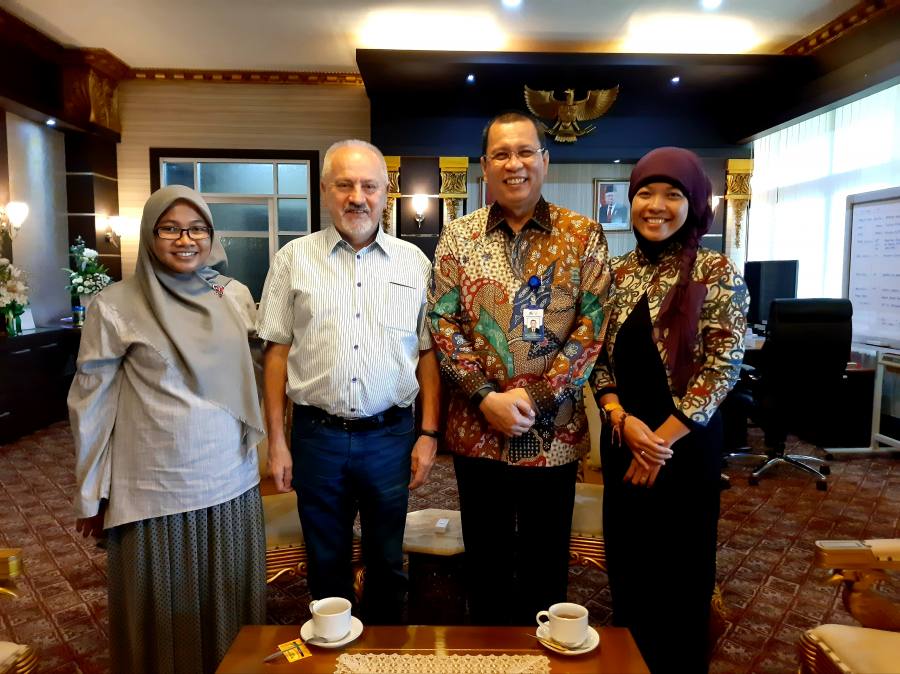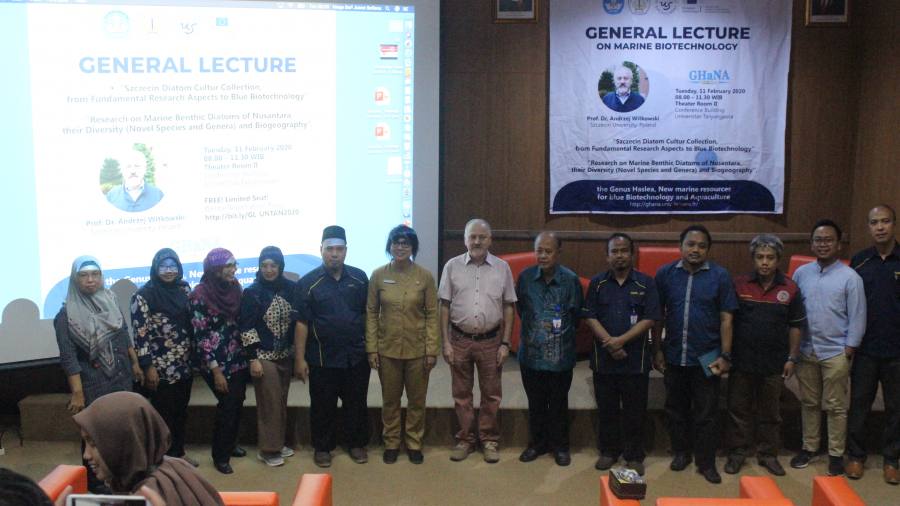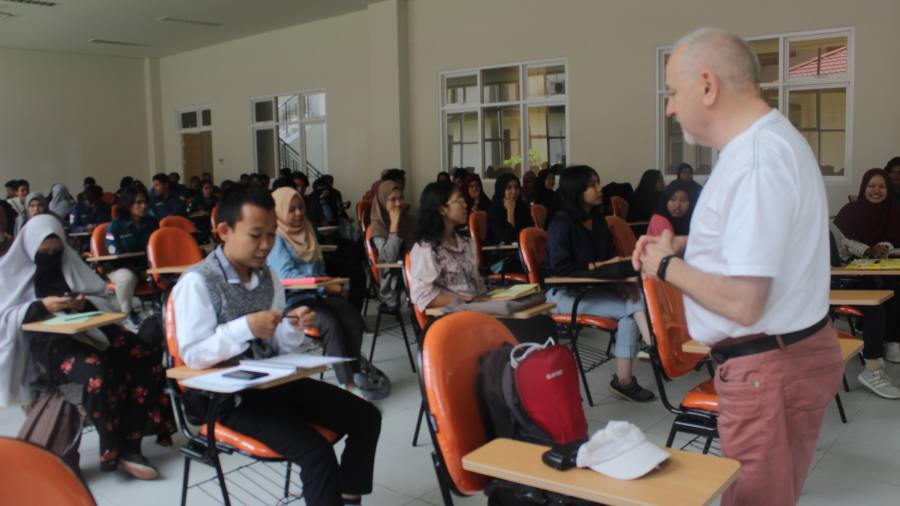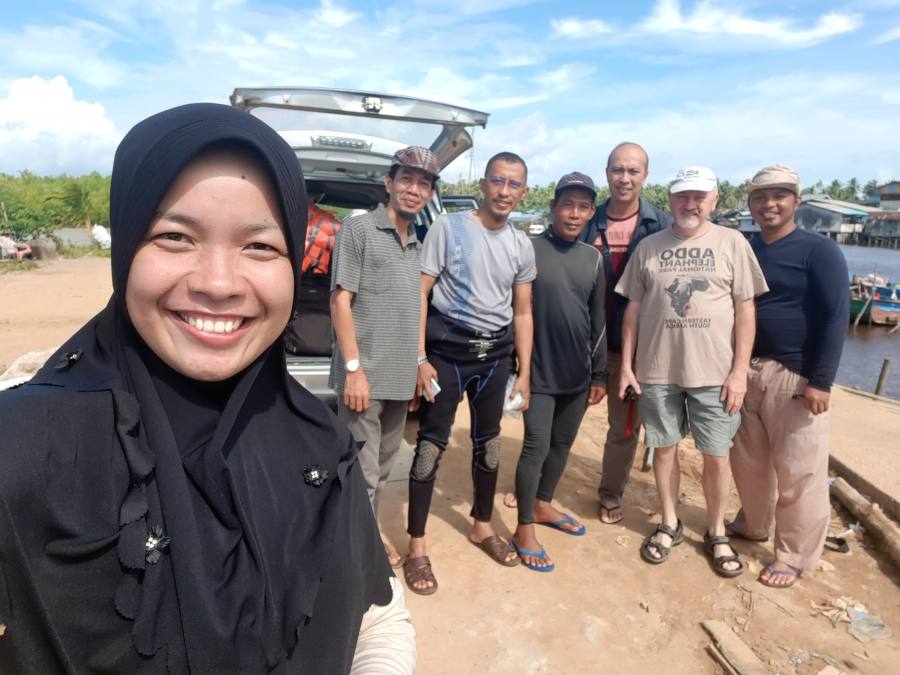
GHaNA project (the Genus Haslea, New marine resources for blue biotechnology and Aquaculture) is funded by the European Union H2020-MSCA-RISE (Marie Skłodowska Curie Action – Research and Innovation Staff Exchange) under grant agreement No 734708/GHANA/H2020-MSCA-RISE-2016, co-led by Le Mans Université (France) and Cardiff University (UK).
The GHaNA project gathers 22 partners (academic and non-academic) from 13 countries who collaborate to explore and characterize a new marine bioresource, for blue biotechnology applications in aquaculture, cosmetics and possibly food and health industry. The project will determine the biological and chemical diversity of Haslea diatoms. The genus Haslea species type H. ostrearia, produces marennine, a water-soluble blue pigment used for greening oysters in Western France, which is also a bioactive molecule.
In this joint research, Prof. Dr. Andrzej Witkowski – researcher from the Laboratory of the Palaeoceanology Unit, Uniwersytet Szczecinski, Poland has performed his secondment at Universitas Tanjungpura Pontianak, Indonesia from 9th February to 6th March 2020 supervised by Rudiyansyah, Ph.D., Ikha Safitri, Ridho Brilliantoro, and Dr. Ajuk Sapar. The major topics of the planned secondments were:
- Searching for blue Haslea
- Studying the biodiversity of non-blue Haslea in Indonesia (Borneo, Celebes, and Java) coastal waters
- Transfer of knowledge: joint work with the Universitas Tanjungpura staff and students in Pontianak on identification of diatoms from samples taken in the Borneo coastal waters
During the secondment period, Prof. Dr. Andrzej Witkowski made a presentation of General Lecture entitled “Szczecin diatom culture collection, from fundamental research aspects to blue biotechnology” and special lecture for students about Indonesian diatoms with title “Research on marine benthic diatoms of Nusantara, their diversity (novel species and genera) and biogeography”.


Three sampling locations have been performed during the secondment period:
1. Lemukutan, Randayan, Penata Besar, Penata Kecil, and Seluas Islands during 17-18 February 2020. Samples have been collected from various habitats, e.g. from the coastal zone, substrat of Padina sp., sediments, and coral reefs of the West Borneo.

2. Samalona and Kodingareng Keke Islands during 24-25 February 2020. Samples have been collected from various habitats, e.g. from the coastal zone, substrat of Padina sp., and sediments of Makassar waters, South Sulawesi.
3. North and South Java (Tiga Warna waters) during 27th February to 5th March 2020 collaborate with researchers from Universitas Brawijaya, Malang, Indonesia. Samples have been collected from various habitats, e.g. from the coastal zone, substrat of Padina sp., and sediments.



